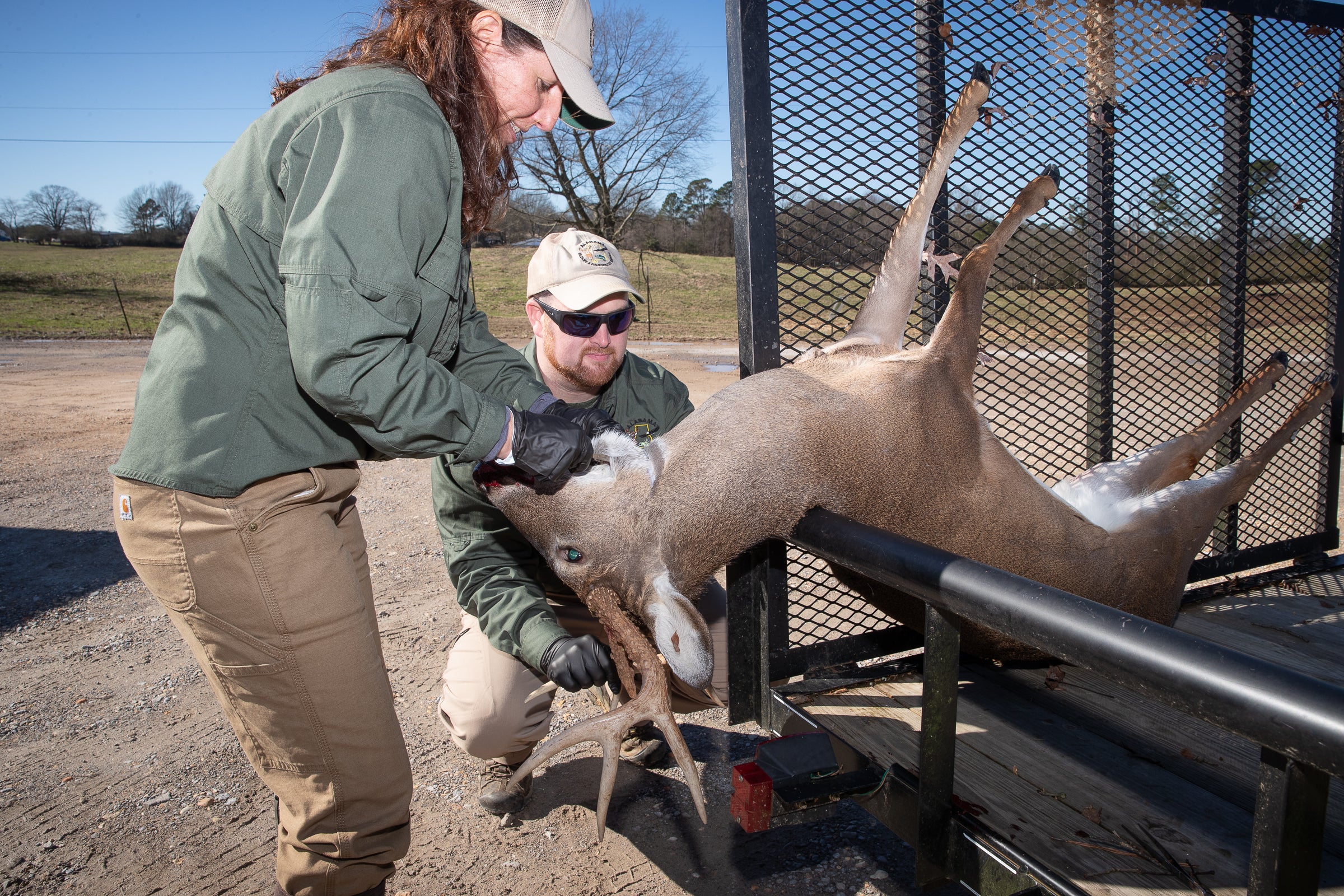By DAVID RAINER, Alabama Department of Conservation and Natural Resources
With archery season underway and the opening day of the gun deer season on the horizon, the Alabama Wildlife and Freshwater Fisheries (WFF) Division is traveling the state to give hunters and the general public updates on chronic wasting disease (CWD) that affects members of the deer family.
First, CWD has NOT been detected in Alabama’s deer herd, which is estimated at about1.5 million animals.
However, CWD has been confirmed in the neighboring states of Mississippi and Tennessee, which caused the WFF’s CWD Response Plan to be implemented. Positive tests near Pontotoc, Miss., and Franklin, Tenn., were within a 50-mile radius of Alabama, and a specific response plan was initiated for those areas in northwest Alabama.
“We have had a CWD Response Plan in place since 2012,” said Amy Silvano, Assistant Chief of the Wildlife Section, at the recent seminar in Prattville. “When CWD was confirmed in Wisconsin, the first time the disease was detected east of the Mississippi, our agency started surveilling for the disease then and formalized the response plan. This is a fluid document. We are learning things every day. As we do, we update our plan.”
Visit www.outdooralabama.com/CWD-Info and scroll down the page to view the Alabama CWD Strategic Surveillance and Response Plan. CWD has only been shown to affect members of the deer family, including whitetails, blacktails, mule deer, elk, moose and caribou.
CWD is a fatal neurological disease, called transmissible spongiform encephalopathy (TSE), which affects the deer family and causes lesions on the brain. As the disease progresses, the affected animal will develop holes in the brain and eventually die. Infected animals may be 5 years old or older before they show symptoms.
“There is a lot of misinformation about what a CWD-infected deer looks like,” said Chris Cook, WFF Deer Program Coordinator. “Some of the deer that have been found positive for CWD look perfectly healthy. Most of the CWD-positive deer have been hunter-harvested deer with no outward signs of CWD.
“When the deer start showing symptoms, it can be a wide range of symptoms. The most common is just abnormal behavior. They don’t act right, because it’s a disease of the central nervous system. They have a drooping, sick posture. You will see that in a deer that’s been wounded by a hunter or hit by a car, so that alone doesn’t indicate a deer has CWD. Other symptoms include trouble with balance, excessive salivation or the loss of weight, but there are a lot of reasons deer lose weight. ”
Cook said the Alabama Department of Conservation and Natural Resources (ADCNR) is charged with managing the wildlife resources of the state for the benefit of the public now and for future generations.
“Any disease like CWD has the potential to affect any wildlife population,” Cook said. “Anything like that gets our attention. That’s why we do all we can to head it off. And once it shows up, we do everything we can to minimize its impact. It not only affects the wildlife resources but also our hunting heritage.
“A lot of rural areas in Alabama depend heavily on income from hunters and hunting-related activities. Hunting generates an impressive $1.8 billion economic impact in Alabama.”
The first case of CWD was discovered in Colorado in 1967. Over the next 30 years, the disease spread very slowly, only taking in a 15- to 20-county region on the Colorado, Nebraska and Wyoming borders. In the late 90s, CWD was detected in Saskatchewan. That incident was traced to live elk from South Dakota that were transported to Canada. CWD continues to spread and now has been found in 26 states and three Canadian provinces. South Korea and Norway also have detected CWD. South Korea’s CWD-positive animals can be traced back to the live transport of deer from infected areas. Over the past decade, the movement of live cervids or infected carcasses by humans has contributed to the increased spread of the disease.
Alabama has long had regulations that banned the importation of live deer. The regulations were amended a couple of years ago to prohibit the importation of deer carcasses from all states and countries. Visit www.outdooralabama.com/cwd for regulations about importing deer parts from out-of-state.
Regulations allow for the importation of certain parts of the deer but not whole carcasses. Permitted parts include:
- Meat from the family Cervidae (white-tailed deer, mule deer, elk, moose, fallow deer, red deer, sika deer, caribou, reindeer, etc.) that has been completely deboned
- Cleaned skull plates with bare attached antlers, if no visible brain or spinal cord tissue is present
- Unattached bare antlers or sheds
- Raw capes, if no visible brain or spinal cord tissue is present
- Upper canine teeth, if no root structure or other soft tissue is present
- Finished taxidermy products or tanned hides
- Velvet-covered antlers are prohibited unless part of a finished taxidermy product.








